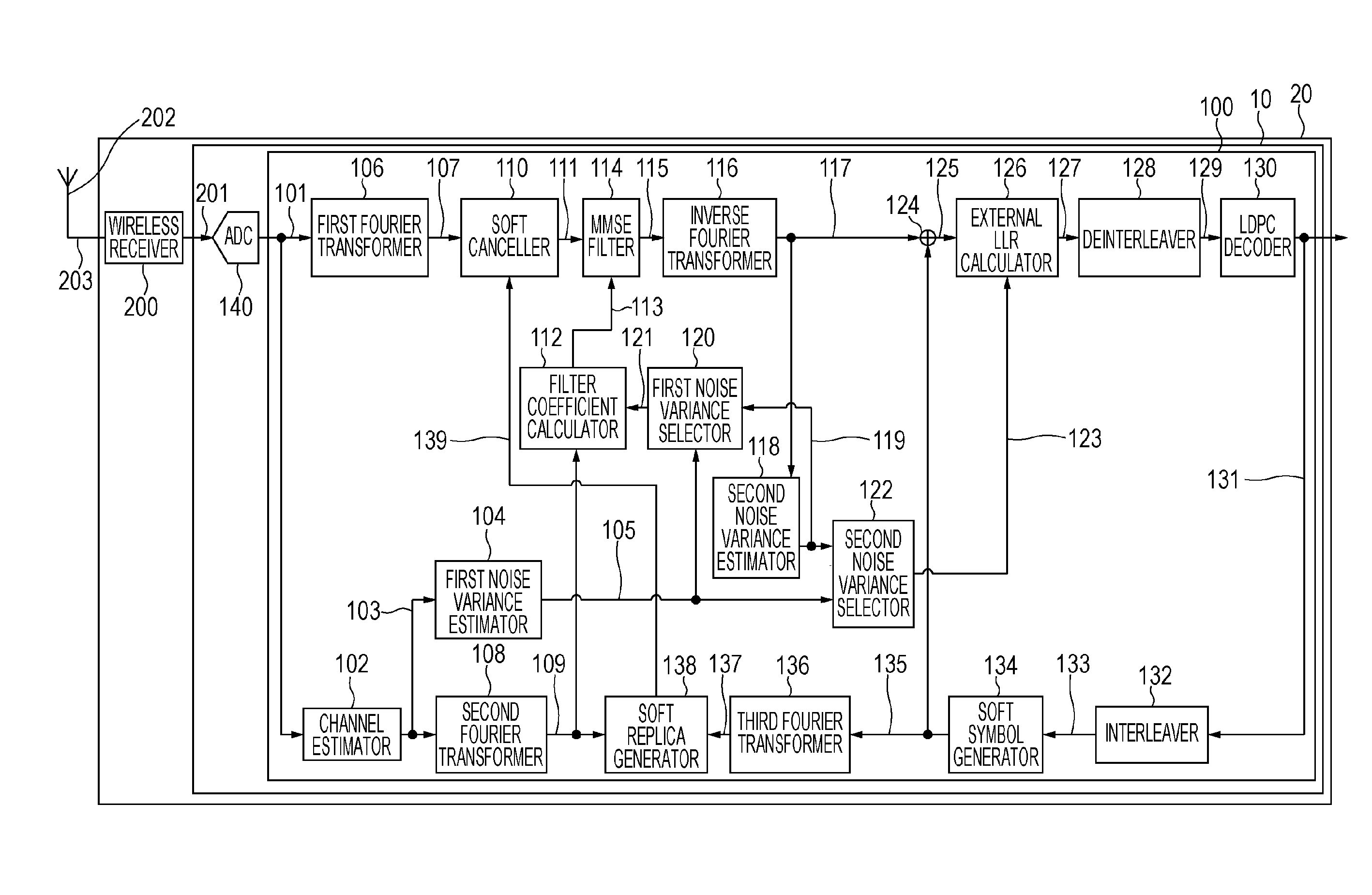Turbo equalizer and wireless receiving apparatus
a technology of wireless receiving apparatus and equalizer, which is applied in the direction of coding, line-faulst/interference reduction, baseband system details, etc., can solve the problems of low accuracy of noise variance estimation, and difficulty in estimation, etc., to achieve the effect of suppressing the deterioration of equalization performance of turbo equalizer
- Summary
- Abstract
- Description
- Claims
- Application Information
AI Technical Summary
Benefits of technology
Problems solved by technology
Method used
Image
Examples
Embodiment Construction
[0013]An embodiment of the present disclosure will now be described in detail with reference to the drawing as appropriate.
[0014]The FIGURE is a block diagram illustrating a configuration of a wireless receiving apparatus that includes a turbo equalizer according to an embodiment of the present disclosure. As illustrated in the FIGURE, a wireless receiving apparatus 20 includes a wireless receiver 200, an antenna 202, and a baseband unit 10.
[0015]The wireless receiver 200 performs amplification processing, frequency conversion processing, and so on for a received wireless signal 203 received by the antenna 202, and outputs an analog received signal 201 that is obtained to an ADC 140 included in the baseband unit 10.
[0016]The baseband unit 10 includes the ADC 140 and a turbo equalizer 100. The ADC 140 performs analog-to-digital conversion processing for the analog received signal 201, and outputs a digital received signal 101 to a channel estimator 102 and a first Fourier transformer...
PUM
 Login to View More
Login to View More Abstract
Description
Claims
Application Information
 Login to View More
Login to View More - R&D
- Intellectual Property
- Life Sciences
- Materials
- Tech Scout
- Unparalleled Data Quality
- Higher Quality Content
- 60% Fewer Hallucinations
Browse by: Latest US Patents, China's latest patents, Technical Efficacy Thesaurus, Application Domain, Technology Topic, Popular Technical Reports.
© 2025 PatSnap. All rights reserved.Legal|Privacy policy|Modern Slavery Act Transparency Statement|Sitemap|About US| Contact US: help@patsnap.com



